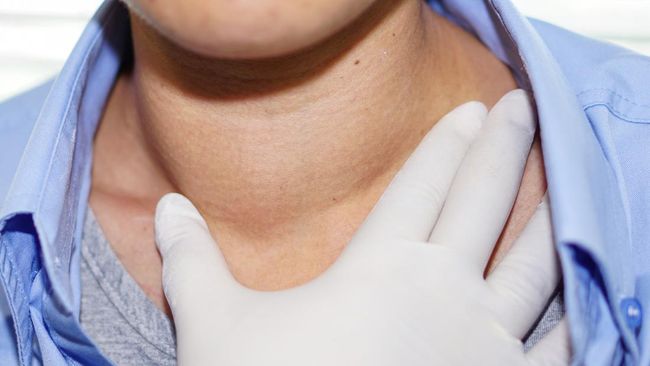
Jakarta, clubnet Indonesia
–
Gland
thyroid
small and located on the front neck may look trivial.However, its role is vital for the body.
This gland produces thyroid hormones such as T3 and T4 which directly affects metabolism, heart rate, body temperature, to skin and hair health.When the thyroid function is disturbed, the impact can spread to many body systems.
Disease specialist in Metabolic endocrine consultants and Eka Hospital BSD Diabetes, Dicky Levenus Phasely explained, thyroid disease can be present in various forms, one of which is a lump or thyroid nodule.
“Benign thyroid lumps are not dangerous directly, but if large size can interfere with the function of swallowing, breathing, even lowering confidence because it interferes with appearance,” explained Dicky during a media meeting in the Central Jakarta area, Monday (7/28).
Dicky also explained, the problematic thyroid can cause mild symptoms such as weakness, weight gain or down without cause, to disorders of the menstrual cycle.But, if it has formed a lump, further evaluation needs to be done to ensure its nature is benign or fierce.
During this time, thyroidectomy or surgery removal of the thyroid gland is the main solution for thyroid lumps.
But, surgery is not without risk, besides requiring large incisions, long recovery periods and the possibility of postoperative hormone disorders make some patients feel reluctant.
Now, medical technology offers new choices that are more minimal risk, namely by using
radio frequency ablation
(RFA).This procedure uses heat energy from radio waves frequency to destroy cells in a lump, without lifting the entire glands.
“This procedure does not require a large incision, just a small puncture with an ultrasound guide, then we point the heat energy right into the nodules,” explained Dicky.
“As a result, the lump shrinks, the thyroid function is maintained, and the patient can go straight home on the same day,” he explained.
He detailed, RFA is now an ideal solution for patients with benign thyroid nodules, especially thyroid types that:
– Benign confirmed through a fine needle biopsy (FNAB)
– Experiencing symptoms of pressure such as difficulty swallowing or shortness of breath,
– Feeling disturbed in aesthetically because the lump is clearly visible,
– Not suitable or refused to undergo surgery,
– Having a nodule that causes hyperthyroidism (active nodules).
“But keep in mind that RFA is not for all conditions. For example in pregnant patients, nodules close to vital structures such as vocal cords, or if the nodules are still not diagnosed clear, this procedure should be postponed,” he said.
Need a doctor’s supervision
On that occasion, Dicky explained that the RFA procedure lasted around 30-60 minutes.
After local anesthesia, the doctor puts a small needle into the nodule and drains the radiofrequency energy until the lump cells are destroyed.
Patients will only experience local pain or mild bruises, and usually can immediately move the next day.
“The risk of RFA complications is very small, especially if done by a doctor who is experienced. But, there must still be a comprehensive evaluation before deciding this action,” said Dicky.
He also said, although RFA is generally not used for thyroid cancer, there are exceptions.In certain cases such as thyroid microcarcinoma (very small cancer) or recurrence of cancer in locations difficult to reach surgery, RFA can be an alternative with special considerations.
“However, this decision cannot be taken alone. Discussion with the medical team is the key so that this procedure is carried out safely and on target,” he said.
(tis/asr)
[Gambas: clubnet video]
Read More: 5 Legend Indonesian Little singers get an award in the Harmoni Timian
